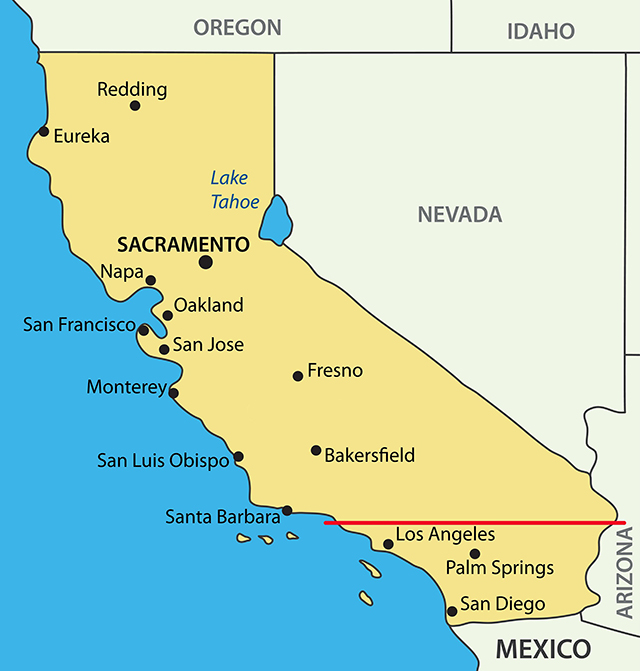Los Angeles is a megacity born of multiple economic booms. TierneyMJ
The curiously lopsided population of California
Half of Californians live below this red line. 👇

That may be hard to believe, but it’s more or less accurate, demographers say: Roughly 20 million people reside north of a line running through Los Angeles, and the other 20 million are squished underneath it.
In the second half of the 19th century, the majority of the state’s residents lived in Northern California, where the Gold Rush city of San Francisco hosted the largest urban population on the West Coast. So what happened?
The shift began with the oil and citrus booms of the 1890s. “Los Angeles and Southern California have one of the largest oil reserves of any region in the country. And agriculture made it an attractive place for land speculators, especially as major aqueduct projects brought water to the region,” said Justin Levitt, an adjunct political science professor at California State University, Long Beach.
Then came Hollywood’s entertainment boom in the 1920s, the WWII defense boom that sprouted industrial factories as well as a sizable military presence in San Diego, and the Southern California aerospace boom of the 1940s and ’50s. The population exploded, with Los Angeles County growing from about 170,000 in 1900 to 10 million today, a full quarter of California’s people.
The San Francisco Bay was once considered the state’s most important harbor, but Southern California stole that distinction away too. The ports at Long Beach and Los Angeles are now the busiest in the United States.
“L.A. spent a lot of resources in the first two decades of the 20th century building the groundwork of what would become a major harbor,” said Levitt. “Over time, ships became deeper and needed deeper water and different kinds of berthing. The shallower San Francisco Bay waters weren’t set up as well for new ships, especially after WWII.”
There are signs that California’s slackening growth in recent years — a consequence of curtailed immigration, housing shortages, and high cost of living — might be nudging the dividing line back north, said Dowell Myers, a demographer at USC.
At last check, about five years ago, the halfway mark was near Hollywood Burbank Airport, he said. “But since then population growth has really stalled in the state. If anything, growth is shrinking in the southern counties. This weak growth must be moving the halfway line slightly upward geographically.”
This article is from the California Sun, a newsletter that delivers must-read stories to your inbox each morning — for free. Sign up here.
Get your daily dose of the Golden State.